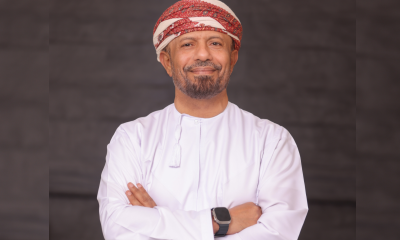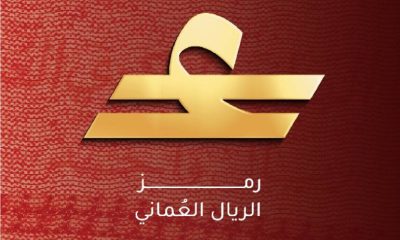News
How is Oman going to cover up the deficit?

Paying for ongoing programmes and initiatives represents a key long-term challenge for Oman. But the Sultanate has a wide range of revenue boosting measures to cover the deficit.
In the first quarter of 2015, Oman’s Central Bank announced that it was in the midst of finalising a plan to issue RO200mn worth of sovereign sukuk, or Islamic bonds, in the local market before the end of the year. The issuance, the government’s first sharia-compliant debt sale, will be put toward financing the nation’s budget deficit, which is expected to reach around 8 per cent of GDP this year. Overcoming this shortfall in both the near- and long-term future represents a key challenge for the government. Like many of its neighbours in the Gulf region, since mid-2014 the country has seen declining government revenues as a result of the rapid drop in oil prices. However, as of mid-June 2015, the government’s spending had not slowed. Indeed, in many areas, the state has increased both spending over the course of the past year. “We hope it (low oil prices) will be short-lived,” Hamood Sangour Al Zadjali, the executive president of the Central Bank of Oman (CBO), told international media in early March 2015. “The government will continue with its plan to invest and go for mega infrastructure projects.”
The government’s spending plans are not out of line with those currently underway across much of the GCC. Oman, like many Gulf governments, is sitting on a considerable stockpile of hydrocarbons reserves and substantial financial assets to boot. Additionally, as the early 2015 sukuk issuance announcement suggests, the state has access to a wide variety of new, alternative potential sources of financing. Ironically, one of the primary objectives of the current spending scheme is to shift Oman’s economy away from oil income, which in 2014 accounted for more than 80 per cent of government revenues. The state is in the midst of a long-term plan to upgrade the nation’s infrastructure, develop and support a wide variety of new industries, attract foreign investment in key areas, and ensure the long-term stability of state-led social spending on health and education development, among other sectors. Paying for these ongoing programmes and initiatives represents a key long-term challenge for Oman, and one that has only been exacerbated by recent fluctuations in the oil market.
PRICE FLUCTUATIONS
As of mid-June 2015, Brent crude was trading at around $60 per barrel, down some $60 since the same period in 2014. This most recent figure is up considerably from the beginning of the year, when Brent briefly bottomed out at below $50 per barrel. Oman’s 2015 state budget, which was approved by royal decree on January 2, does not include an anticipated average oil price for the year. Since the release of the budget, a variety of organisations have sought to estimate this figure, based on the country’s expected oil production and the budgeted revenue figures. According to local media reports, for example, the 2015 budget relies on an average expected oil price of just under $56 per barrel. Meanwhile, in an early 2015 report issued by KPMG, the budget’s assumed average oil price (given a constant rate of production through the year) is closer to $80 per barrel.
Similarly, the 2015 budget does not name a projected break-even oil price. According to KPMG the 2014 budgeted break-even price was $105 per barrel, while the actual realised oil price for 2013 (the latest year available at time of publication) was $109 per barrel. These figures are considerably higher than the current oil price and the average projected overall oil price for 2015, with the latter hovering around $61 per barrel as of mid-June, according to forecasts from the US-based Energy Information Administration. So, pending an uptick in the latter half of the year, the Sultanate stands to pull in rather less revenue this year than in previous years.
According to the 2015 budget document, government expenditure for the year will reach RO14.1bn, which is equivalent to an increase of 4.5 per cent on the 2014 budget. Revenues, meanwhile, were projected to come in at RO11.6bn, which represents a fall of around 1 per cent on the previous year, leaving an expected deficit of RO2.5bn. This is an increase on 2014, when the government anticipated a budget deficit of RO1.8bn. That said, in 2014 the government ended the year with higher-than-budgeted expenditure and revenue alike, with the former coming in at RO14.5bn and the latter at RO13.9bn. The actual deficit, then, was just RO600mn, which is significantly less than the originally budgeted figure of RO1.8bn. The discrepancy between the budgeted figure and the final actual figure can be attributed almost entirely to larger than expected oil and gas revenues for the year as a whole, despite the rapid fall in the price of crude beginning in June.
FORGING AHEAD
Regardless, the government plans to move forward with a wide variety of investment programmes over the course of the year. Building out the country’s national infrastructure has been a key area of focus in recent years, and the state is continuing with a number of large-scale projects in this area. The 2015 budget includes financing for the country’s planned national rail network, for example, which will eventually be linked up to the regional Gulf rail network, a $200bn project that includes more than 2000 km of new trunk lines in GCC member states. In May 2015 the Ministry of Transport and Communications tendered prequalification bids for two engineering, procurement and construction contracts for the first phase of the project. The ministry has announced that it expects to award the contracts before the end of the year. Additionally, the 2015 budget includes financing for major new road and highway projects.
Social and defence expenditure received a boost in the 2015 budget as compared to the previous year. The government plans to spend RO3.8bn on defence and security over the course of the year, up 2.7 per cent from 2014. The most recent figure is equal to some 27 per cent of total state expenditure and around 10.3 per cent of GDP, both of which are down slightly on the previous year. Oman has seen an increase in defence spending in recent years. Between 2011 and 2014 the country’s expenditure in this department more than doubled. In this context the slight rise in spending in 2015 can be considered nominal. Government spending on social services, meanwhile, is expected to grow considerably in 2015 as compared to the previous year. Health expenditure in the 2015 budget was put at RO684m, up 17 per cent from the previous year, while education spending jumped 27 per cent to RO1.8bn. Meanwhile housing, public services and social security and welfare saw budgeted jumps of 10 per cent, 10 per cent and 17 per cent, respectively.
TAPPING NEW SOURCES
Oman has a wide range of options when it comes to covering the anticipated 2015 budget deficit. Cutting costs by reducing subsidies; ramping up corporate tax rates and licensing fees; tapping the nation’s financial reserves, which are primarily in the form of sovereign wealth funds (SWFs); issuing both traditional and sharia-compliant debt in the local market and, perhaps, international markets; selling state-owned assets; privatising and listing government-controlled firms on the Muscat Securities Market (MSM); privatisations; international borrowing – these are the government’s many options.
The government has already made moves in this regard. The slower growth in defence spending mentioned above was widely taken as a positive response to a late-2014 recommendation by the Majlis Al Shura, Oman’s Consultative Assembly, an advisory arm to the government, to cut spending in this regard.
At the same time the government’s reserves are considerable. According to data published by the US-based Sovereign Wealth Fund Institute, as of the end of 2014 Oman’s two largest SWFs – namely the State General Reserve Fund and the Oman Investment Fund – were valued at around $19bn in total.
That said, the SWFs are generally considered to be a source of last-resort financing, while issuing debt is likely to be more readily embraced. As mentioned earlier, Oman has already made moves in this direction. In early 2014 the government first announced that it planned to issue sovereign Islamic debt instruments at some point in the future, primarily in an effort to support Oman’s burgeoning sharia-compliant financial sector. Sukuk were legalised by the nation’s Capital Markets Authority in early 2013. The state’s plan was put on hold for the rest of 2014, only to be revived in early 2015, partially as a result of the government’s new financing requirements.
Other likely revenue boosting measures include a rise in expected tax income and the privatisation of state-owned enterprises (SOEs). Both of these issues have been under discussion in recent years. According to KPMG data, income tax revenues are expected to jump by around 25 per cent in 2015 as compared to the previous year, primarily as a result of the state collecting back tax from the corporate sector.
Finally, the whole or partial privatisation of a number of SOEs is already underway. In April 2014, the government carried out an initial public offering (IPO) to sell off 19 per cent of Oman’s leading telecommunications firm, Omantel, on the MSM. The IPO was well received, raising some RO240mn, and was taken to be an indicator of future plans. While the government has yet to make any formal announcements in this regard, in January 2015 it announced that it was looking into selling off a part of the Oman Oil Refineries and Petroleum Industries Company. A variety of other firms could eventually also be listed, including a large number of construction firms, manufacturing companies, utilities and transport operators and other players in areas related to infrastructure and tourism.
-

 Leaders Speak2 months ago
Leaders Speak2 months agoDhofar International Development and Investment Company: Driving Sustainable Growth and Strategic Synergies in Oman’s Investment Landscape
-

 Economy2 months ago
Economy2 months agoMaal Card: What Oman’s New National Payment Card Means for Everyday Users
-

 Events2 months ago
Events2 months agoOER Corporate Excellence Awards 2025 Honours Entities and Innovations in Oman
-

 Banking & Finance1 week ago
Banking & Finance1 week agoOman Oil Marketing Company Concludes Its Annual Health, Safety, Environment, and Quality Week, Reaffirming People and Safety as a Top Priority
-

 News1 month ago
News1 month agoSheikh Suhail Bahwan, Chairman of Suhail Bahwan Group, Passes Away
-

 Economy2 months ago
Economy2 months agoOman Unveils Official Omani Rial Symbol in Landmark Move to Boost Global Currency Presence
-

 News1 month ago
News1 month agoOIG Appoints New CEO to Lead Its Next Chapter of Excellence
-

 News4 weeks ago
News4 weeks agoReport: How India & The Middle East Are Exploiting Immense Economic Synergies




























You must be logged in to post a comment Login